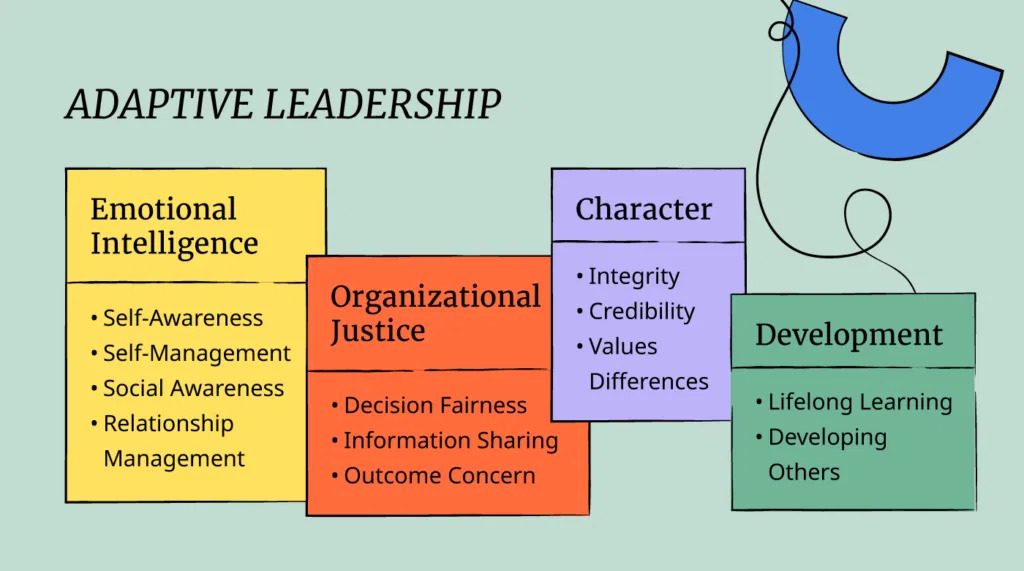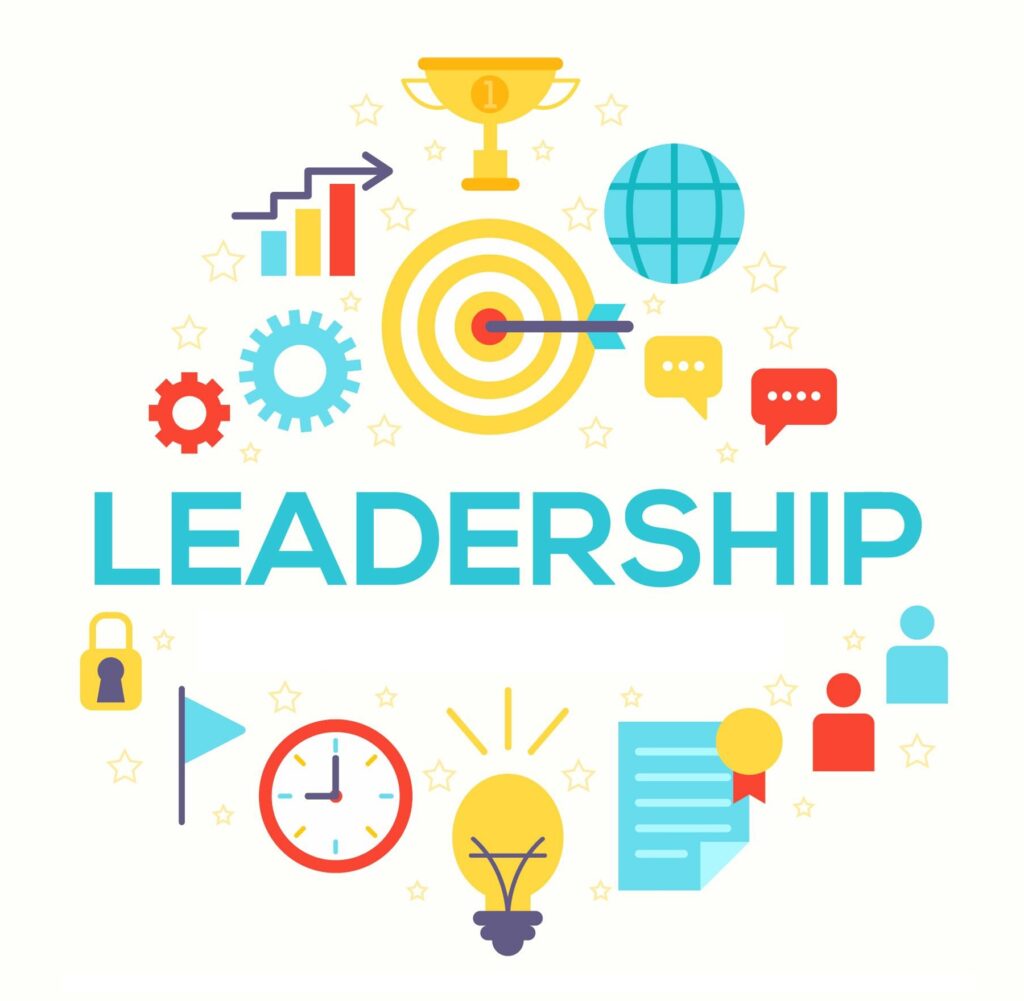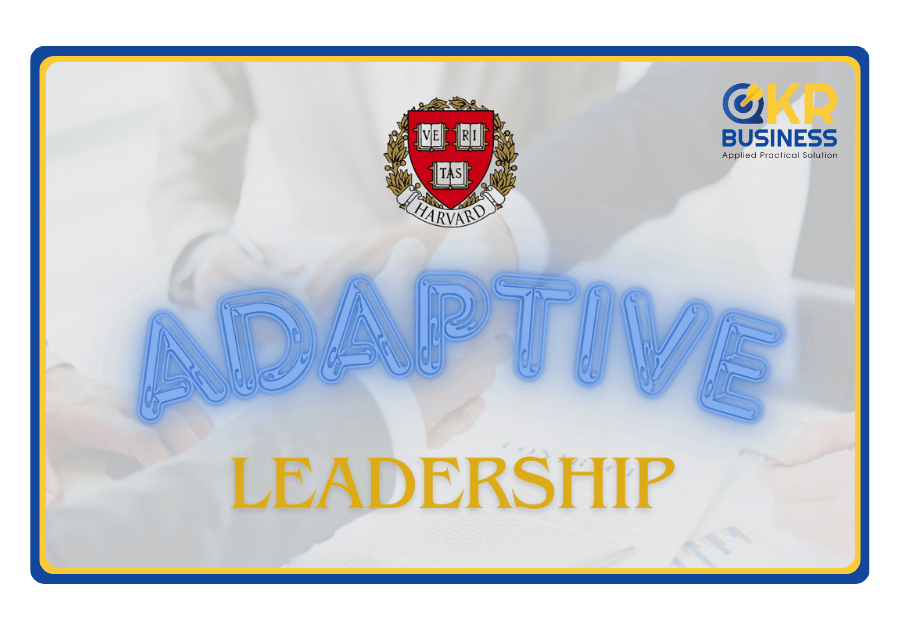The rapidly changing modern world demands leaders who are not only adept at responding to business situations but also skilled at guiding collective change. Breakthroughs in technology, economic volatility, and increasingly demanding customer expectations are putting immense pressure on organizations in the global business landscape. The Adaptive Leadership style emerges as a strategic, practical, and effective approach, enabling managers to not merely overcome but also leverage volatility as an opportunity for growth.
Understanding Adaptive Leadership
Developed by Dr. Ron Heifetz and Marty Linsky at Harvard University, Adaptive Leadership is a groundbreaking leadership style. Unlike traditional management methods that primarily focus on technical solutions, Adaptive Leadership aims to address “adaptive challenges” surrounding issues that require profound changes in thinking, values, and behaviors. It’s a journey of continuous learning, stepping outside of comfort zones, and demanding collaboration and innovation from all stakeholders.

Adaptive Leadership, one of the most modern and effective leadership styles in today’s global economic context
Exemplary Adaptive Leaders in Practice
To better illustrate the Adaptive Leadership style, let’s examine three concrete examples of outstanding leaders who have demonstrated the power of this approach:
1. Bill Gates – Co-founder of Microsoft and Philanthropist
- Situation: After stepping down from his executive role at Microsoft, Bill Gates shifted his focus to philanthropy through the Bill & Melinda Gates Foundation. He faced the “adaptive challenge” of addressing pressing global issues such as poverty, disease, and climate change.
- Action: Gates applied his business acumen and strategic perspective to systematically analyze social issues. He focused on finding innovative and sustainable solutions, combining technology, healthcare, and education. He also proactively built alliances with governments, NGOs, and the private sector to maximize impact.
- Result: The Bill & Melinda Gates Foundation has achieved significant milestones in preventing diseases (like polio and malaria), improving sanitation, enhancing education quality, and promoting agricultural development in developing countries.
2. Jacinda Ardern – Prime Minister of New Zealand
- Situation: When faced with the COVID-19 pandemic, Ardern demonstrated exceptional adaptive leadership. She quickly applied a strategic perspective to assess the situation, recognizing it as an “adaptive challenge” requiring widespread behavioral change among the population.
- Action: Ardern decisively implemented strict lockdown measures while communicating transparently and empathetically with the public. She did not hesitate to exercise leadership beyond conventional “authority,” calling for unity and sacrifice for the common good.
- Result: New Zealand successfully controlled the pandemic, protecting public health and maintaining socio-economic stability during a critical period.
3. Satya Nadella – CEO of Microsoft
- Situation: Upon taking over Microsoft, Nadella faced a major “adaptive challenge”: The company was losing its dominance in the technology sector, with a stagnant corporate culture and a lack of innovation.
- Action: Nadella changed the game by promoting a culture of learning, collaboration, and a focus on a “growth mindset.” He boldly invested in cloud computing (Azure), encouraged the development of diverse new products, and built an open and innovative corporate culture globally.
- Result: Microsoft has experienced a strong resurgence, regaining its position as one of the world’s leading technology companies with a massive market capitalization (over $2.7 trillion in 2023).

Bill Gates, Jacinda Ardern, and Satya Nadella are great leaders of the Adaptive Leadership style
5 Core Principles of Adaptive Leadership
1. Strategic Perspective
Leaders need a comprehensive overview of the big picture in every situation to make sound strategic decisions. This requires analytical skills, the ability to recognize motivations, and prioritize critical issues.
Imagine yourself as a coach, observing the entire team training, competing, interacting, and assessing individual skills… The best observation point is from a distance. This is what Heifetz and Linsky mean by “Strategic Perspective.” Modern managers and leaders need to focus on cultivating observation skills, separating themselves from this “myopic” trap to gain an overview amidst a multitude of distractions.
A classic case is the “Tylenol Crisis.” In 1982, a series of deaths were reported in Chicago linked to the use of Tylenol, an over-the-counter pain reliever. Investigations revealed that some Tylenol bottles had been contaminated with cyanide. James Burke, CEO of Johnson & Johnson at the time, expertly applied this strategic perspective to assess the situation, understand public concerns, and make a bold but correct decision to pull Tylenol off the shelves, even though it meant incurring significant financial losses. Johnson & Johnson’s handling of the situation demonstrated prioritizing public safety above all else, contributing to a positive resolution of the crisis.
2. Distinguishing Technical Challenges from Adaptive Challenges
A technical problem, such as a server power outage, can be easily addressed with a prepared solution or contingency plan. But adaptive challenges require changes in thinking or ways of working among teams and members. Understanding the type of challenge faced helps leaders choose the right and effective solution. For an adaptive challenge, such as changing the company culture from fragmented to collaborative, it requires a completely different approach.
Addressing an adaptive challenge often requires experimenting with multiple approaches, tackling the problem one issue at a time, and often encountering resistance when people are asked to step outside their comfort zones.
For example, when a company is losing market share, the question for the management team and business leaders is whether the cause is a technical issue (e.g., a marketing campaign not performing as expected) or an adaptive challenge (e.g., the company’s products are no longer relevant to the current target audience). Obviously, each challenge will require completely different solutions. Therefore, correctly identifying the problem is the most important first step.
3. Practicing Leadership, Not Imposing
Requiring employees to perform assigned tasks is intended to ensure work is carried out and meets the required standards. Instead of imposing orders, adaptive leaders focus on identifying priority challenges at each point in time, mobilizing people and resources to address difficulties, and guiding the team through the inevitable losses, instability, and anxieties in the process of change.

Mobilizing and utilizing the collective strength of the entire team to address challenges optimally
Let’s consider a case where the CEO wants to implement a new strategy but faces “lack of support” from middle management. A true adaptive leader will not simply order everyone to change through rigid regulations or sanctions. In this situation, the adaptive leader will actively engage in dialogue, understand the current challenges and obstacles of the team, listen to concerns and diverse proposals from all levels, and find ways to gain consensus for the solution.
4. Engaging in Proactive Dialogue
Change often encounters resistance, and even conflict, from a large part of the existing workforce. This is a normal reaction and common in any environment. Therefore, adaptive leaders should not shy away from these difficult conversations. Instead, they need to proactively create an open, constructive, and public discussion space where dissenting opinions can be voiced, where “undiscussable” issues can be shared, and where everyone can work together to address those perspectives transparently.
5. Political Approach
With a more comprehensive approach to problem-solving, the adaptive leadership style often disrupts the existing power dynamics within an organization. Real change is an obstacle for those who are accustomed to or prefer other leadership styles (such as Authoritarian, Delegating, etc.) or simply those who don’t like to touch on “factional” issues.
Faced with each challenge, adaptive leaders need to understand the perspectives of stakeholders, grasp their interests, understand their intrinsic or extrinsic motivations (e.g., through DISC personality analysis), as well as their dedication and commitment to the organization and the potential losses they may face. From there, leaders can easily build their strategies to gain the necessary support, build key alliances, strengthen resistance management, and navigate the political environment effectively with minimal effort.
Developing Adaptive Leadership Skills
Becoming an adaptive leader is not an easy journey. This process requires modern managers and leaders to continuously learn, self-reflect, and be willing to experiment with different solutions to truly deliver sustainable value, not just temporary results.

Leaders need to simultaneously meet multiple goals and aim for shared value
Here are some key steps for practicing and developing Adaptive Leadership that managers and organizational leaders can refer to and apply:
1. Increase Self-Awareness
Understand your own appropriate leadership style, your strengths and weaknesses, and your default reactions to challenges. You can refer to Situational Leadership to identify and flexibly choose the most appropriate style for the situation.
2. Lifelong Learning Mindset
Knowledge is infinite. Always maintain a curious mindset about everything. Read and research a variety of materials, books, and attend relevant industry conferences to gain knowledge and diverse perspectives from leading experts. Seek out diverse viewpoints on topics that interest you. And be willing to accept constructive criticism and challenge your own assumptions.
3. Regularly Practice “Strategic Perspective”
Set aside specific and regular time for yourself to step back and reflect on past situations. Ask yourself, “What is really happening here? What are the fundamental issues? What are the different perspectives surrounding the same issue? If faced with a similar situation again, what would we do differently to improve?”
Regularly practicing “Retrospective” is widely applied around the world, especially in the technology industry and startups. When done regularly, this activity provides the team with a “safe space” and habits of deep thinking and multi-faceted, constructive feedback to analyze complex situations, identify core issues, and consider better courses of action in the future.
4. Develop the Ability to Engage in Proactive Dialogue
At the same time, mastering active listening, empathy, and clear, specific communication plays a key role throughout the communication process. Managers and leaders need to learn how to give and receive feedback effectively to develop and enhance the capacity of members within our organization with a respectful and learning-oriented approach.

The Adaptive Leadership style focuses on a fundamental and comprehensive approach to problem-solving
In the context of VUCA and BANI, with many fluctuations and complex developments in the current global landscape, the Adaptive Leadership style is increasingly becoming a practical and essential approach to navigating teams and businesses through the complexities of today’s economic environment. By grasping the core principles and actively developing adaptive capacity, you can absolutely become an outstandingly effective manager or leader with “Heart – Vision – Talent,” equipping yourself with the ability to lead your team and organization to overcome change and instability in the new context, step by step, towards a prosperous and sustainable future.


